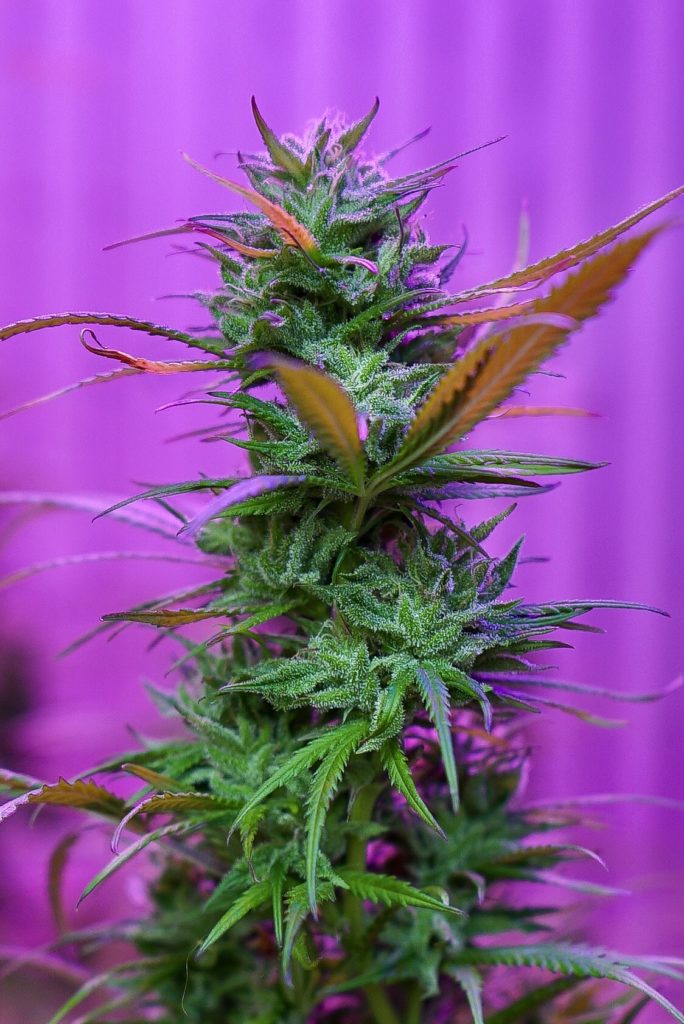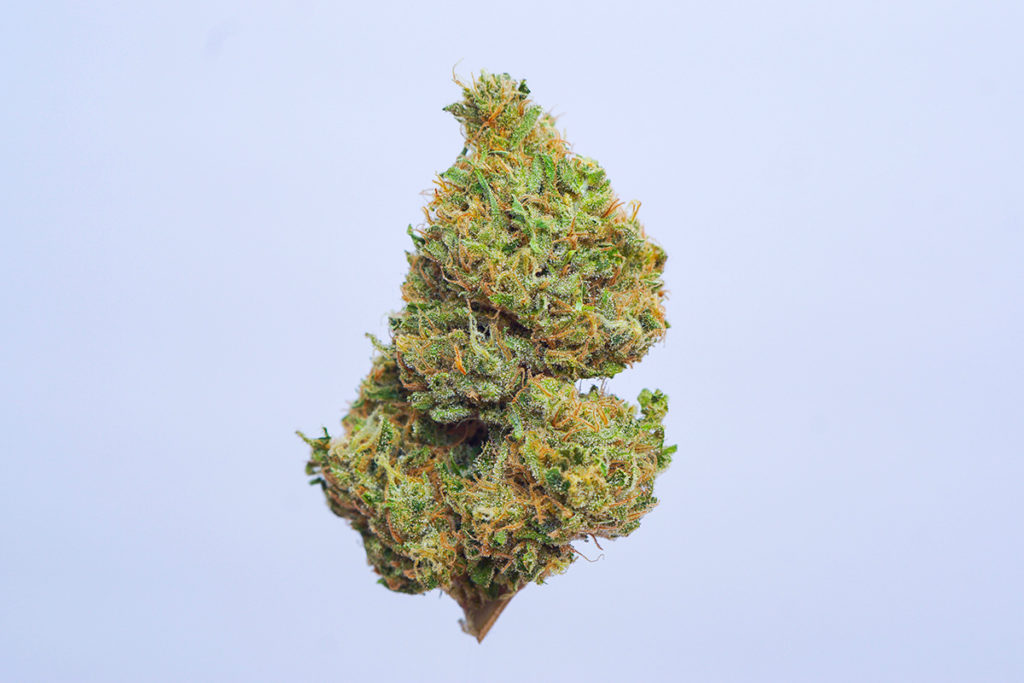
Some cannabis connoisseurs will say that THC is their love language; others will say CBD all the way. These popular cannabis compounds get most of the attention, but did you know that they are only two of the 113 cannabinoids that have been found and isolated within the cannabis plant?
Before getting into what all these cannabinoids are and what they do, it’s important to first understand the endocannabinoid system and what it does for your health. In short, the endocannabinoid system exists within your central and peripheral nervous system and contains receptors that send messages throughout your body to help achieve and maintain homeostasis. These endocannabinoid receptors are the same as the phytocannabinoids found in cannabis, which will either modulate or stimulate your existing receptors when ingested, which can cause the psychoactive, pain-relieving effects you know and love. For more detail on this whole process, check out our full guide to the endocannabinoid system.
A single cannabis plant can contain 100 or more cannabinoids, but today we’re going to focus on those that are the most commonly occurring and potent. You’ll notice that some of these cannabinoids are the raw acid version of another cannabinoid, which is the natural state it’s in before the molecular structure is changed through a heating process called decarboxylation.

What is decarboxylation?
Raw cannabinoids exist within the trichomes of fresh cannabis flowers. The raw chemical state contains what is called an extra carboxyl ring in its chain, which slowly breaks down when exposed to light, heat, and air, eventually converting into the decarboxylated version that is actively absorbed by the body. This process happens in smaller doses during the curing process that dries the cannabis leaves, but it’s not until you put a flame to the flower and take a big inhale that you’ll truly decarb the cannabinoids and get, for example, psychoactive THC instead of raw THCA. Each cannabinoid has a different boiling point where decarboxylation will occur, but it typically happens between 200 and 400 degrees Fahrenheit.
Now that you have the basics on the endocannabinoid system and decarboxylation, here are the 11 most common cannabinoids you’re most likely to find in any given cannabis plant.
Cannabigerolic Acid aka CBGA
Cannabigerolic Acid is the “stem cell” cannabinoid, meaning all cannabinoids first start off as CBGA before they are broken down by enzymes and evolve into either THCA, CBDA, or CBCA (more on those ahead). The ability to produce CBGA is what sets cannabis apart from other plants. Once the enzymes break down CBGA and it molds into its intended branch, these different cannabinoid lines provide unique sets of benefits. Then, once those raw cannabinoid compounds are decarboxylated when smoked or vaped, you get a whole different cannabinoid yet again.
Cannabigerol aka CBG
CBG is a minor cannabinoid that is not as well known as CBD or THC, but should be; it’s the chemical parent of both of those cannabinoids, meaning CBG turns into THC or CBD when it is exposed to UV light or heat. Typically, cannabis plants contain less than 1% CBG. Medicinally, it is a powerful vasodilator that may have the ability to reduce intraocular pressure in glaucoma patients. It has also shown a beneficial effect on patients with inflammatory bowel disease and Huntington’s Disease. Breeders are working on creating more CBG-heavy strains by cross-breeding and experimenting with extraction times, and a medicinal strain is in the works by a Dutch medicine company.
Tetrahydrocannabinolic Acid aka THCA
THCA is the precursor to THC, the most popular cannabinoid. The two abbreviations are used interchangeably on many dispensary labels despite the fact that THCA and THC are technically two different cannabinoids. THCA in its own form, which exists in the trichomes of raw and live plants, does not contain the same psychoactive effects as THC. Preliminary research on THCA is showing some promising medical and therapeutic benefits like slowing cell growth in prostate cancer and helping reduce seizures in epilepsy patients. These benefits are why superfood lovers add raw cannabis leaves to juices, smoothies, and salads.
When cannabis flowers are trimmed and left to cure, the heat exposure allows the decarboxylation process to begin, which slowly starts to convert the plant’s THCA content to THC. But it’s not until you either heat it up and make some cannabutter or pack a bowl and put a flame to it that the decarboxylation process reaches the right temperature and you get…
Delta-9-Tetrahydrocannabinol aka THC
When THCA is heated to its boiling point of about 315 degrees Fahrenheit, it takes on the psychoactive form of THC we all know and love. THC works by binding to CB1 receptors in the endocannabinoid system in a process that works like a lock and key. The stimulation from THC is what produces the euphoria and psychoactivity of cannabis, which can affect people in many different ways depending on the strain and quality of herb you’re smoking. If you’re smoking an indica strain, it’s more likely to mellow you out and help you fall asleep, but if it’s a sativa, you might find a jolt of euphoric energy or a case of the giggles. Some people don’t even notice significant differences from one strain to another.
What’s important to remember about THC’s effects is that everyone’s endocannabinoid system is unique and the effects will vary depending on your body’s existing cannabinoid levels. If you’ve ever felt paranoid or anxious after smoking weed, it could be an overexpression of CB1 receptors, which will mellow out quickly if you can center your thoughts and focus on one thing for a couple minutes. On the contrary, if you’re suffering from depression, PTSD, or have other mental health concerns that affect your quality of life, the CB1 stimulation could be exactly what your system needs to find balance again. Other potential health benefits of THC include treatment for nausea, loss of appetite, and similar symptoms in chemotherapy patients. One pilot clinical study showed THC to inhibit tumor cell proliferation in glioblastoma multiforme patients and increased life expectancy by 24 weeks.
Tetrahydrocannabivarin aka THCV
THCV is made of the same intoxicating molecules and acts on the same receptors as THC, but the effects are quite different. It’s said that the ‘high’ you get from THCV is more psychedelic but also more fleeting than the high from THC. This is why it’s called the “race car” cannabinoid – it comes on fast and leaves almost as quickly, unlike the slower onset of other cannabinoids. THCV is most potent in landrace African sativas like Durban Poison and other strains made with its genetics, which probably explains why strains with poison in the name come on so intensely for some people (me). The boiling point of THCV is 428 degrees Fahrenheit, so if you’re vaping this one you’re going to want to turn it up to a higher than usual setting.
Studies have shown THCV to act as an appetite regulator, as cannabis users are less likely to be obese than non-cannabis users. Another study suggests that cannabis users have lower levels of fasting insulin, which could show potential for cannabis as a medication for diabetics.
Cannabinol aka CBN
CBN is a popular therapeutic and non-psychoactive cannabinoid known for its insomnia-fighting effects. Unlike most cannabinoids that originate as CBG, CBN stems from THC that has degraded after overexposure to air, light, or heat. If you have a poor storage system (get your hands on a Cannador) or some old herb lying around, save those nugs for nighttime as they will be higher in CBN, which is a great sleep aid and appetite stimulant. According to Steep Hill Labs, 5mg of CBN is equivalent to 10mg of Diazepam.
Cannabidiolic Acid aka CBDA
CBDA is another raw cannabinoid that exists in the trichomes of raw cannabis leaves. As decarboxylation occurs it converts to CBD, the medical cannabis powerhouse. This is another cannabinoid that exists in only trace amounts, so breeders are working on strains higher in CBDA rather than THCA in order to increase the availability of its effects. If you add raw cannabis leaves to a juice, smoothie, or salad, you may experience some of the anti-inflammatory, pain-relieving effects that are similar to CBD, although there is little data to determine its effectiveness versus that of the decarboxylated version.
Cannabidiol aka CBD
As you’ve probably figured out, CBD is the decarboxylated version of CBDA and it’s responsible for most of the health benefits when it comes to cannabis products. CBD is so popular around here that there’s actually an entire guide dedicated to it and how it works with the endocannabinoid system. In short, CBD modulates CB2 receptors located throughout the central and peripheral nervous system while stalling the fatty acid that breaks down these receptors. This process helps the endocannabinoid system achieve and maintain homeostasis, which is why CBD has demonstrated anti-seizure, anti-inflammatory, pain-relieving properties that offer alternative relief for a variety of conditions. CBD has no psychoactive properties, so you can reap all of these benefits without the high.
Cannabichromenate Acid aka CBCA / Cannabichromene aka CBC
CBCA/CBC is the third most commonly occurring cannabinoid after THC and CBD. These non-psychoactive compounds are known for powerful anti-inflammatory effects that can also be used to control swelling, and CBC’s effects are supposedly more potent when combined with THC and CBD to produce an entourage effect, in which cannabinoids work together to intensify their benefits. One study showed CBC to block pain and inflammatory responses, and another suggests that the way it acts on inflammation with a lack of side effects is safer than NSAIDs like ibuprofen.
Cannabidivarin aka CBDV
CBDV is similar to CBD in that it is non-psychoactive and boasts some serious medical potential. One study has shown CBDV to decrease the severity of certain types of seizures, and scientists have been researching its effects as an anticonvulsant for people with epilepsy. GW Pharmaceuticals is currently testing CBDV’s effects on patients with autism, Rett syndrome, and epilepsy. CBDV-heavy strains are most commonly found in landrace Indica strains throughout northwest India and Pakistan.
The more you know about the different cannabinoids and how they interact with your body, the easier it will be to discover different strains and products that work best for you. Knowledge is power when taking charge of your own wellness, so keep learning, stay curious, and smoke up those cannabinoids.
This post is a collaborative effort between Mandy and Daisy.
Images via Chronic Stock